
Familie Haller |
Freediving in the Mediterranean |
| ☰ Menu |

Familie Haller |
Freediving in the Mediterranean |
| ☰ Menu |
für die deutschen Freunde ᐅᐅᐅ

|
The seaThis is the view we know... The sea.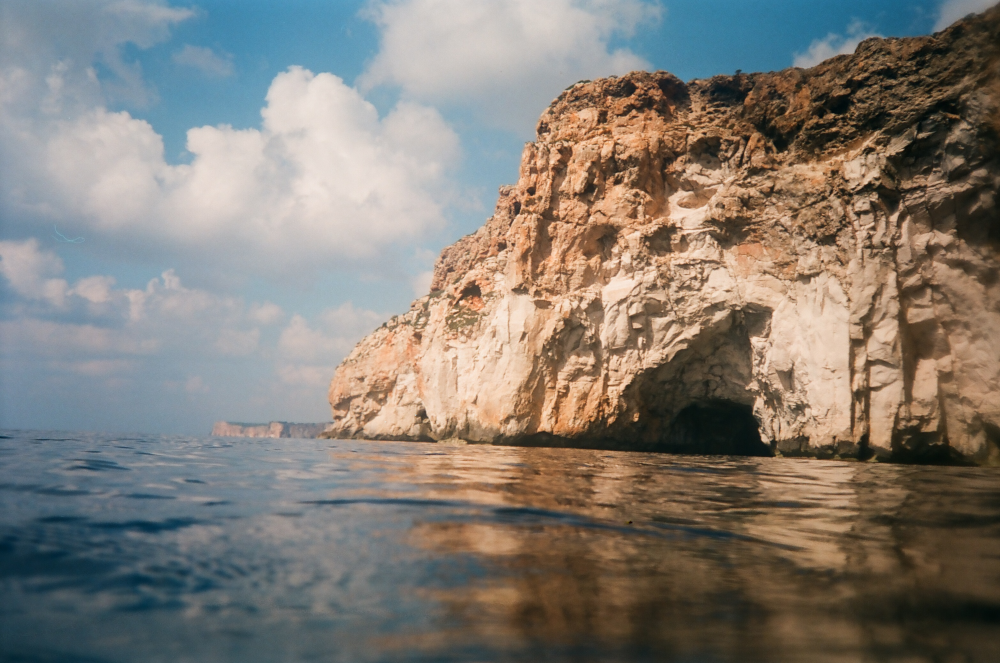 However, we only see the surface. |
|
It was boredom during the holidays that induced me to buy a snorkel and diving goggles. Since that time I like it, the view into the depth. 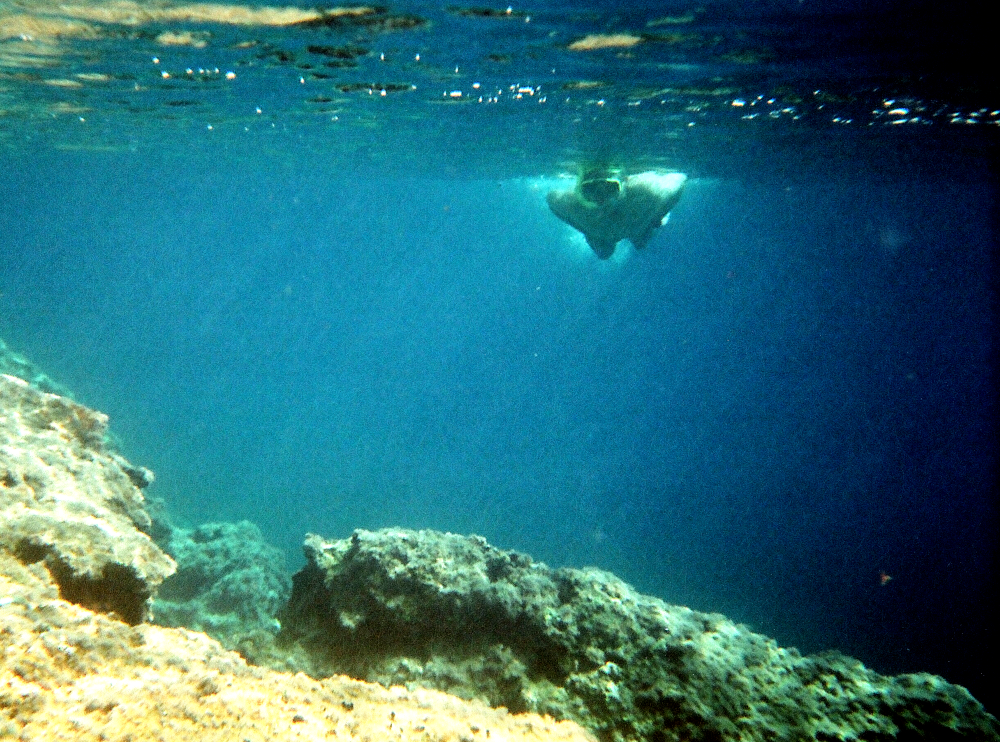 Under the surface we find ourselves in a quiet, different world. |
|
In the beginning, it costs quite an effort to put your head into the water and breathe through the snorkel. It is best to practice this in shallow water, where you can still stand safely on the ground. If this works reasonably well, lie calmly on the water and let yourself drift. |
SwarmLet's slowly drift towards the rocks now.In the oxygenated water of the breakers crashing against the rocks colourful fish are romping. 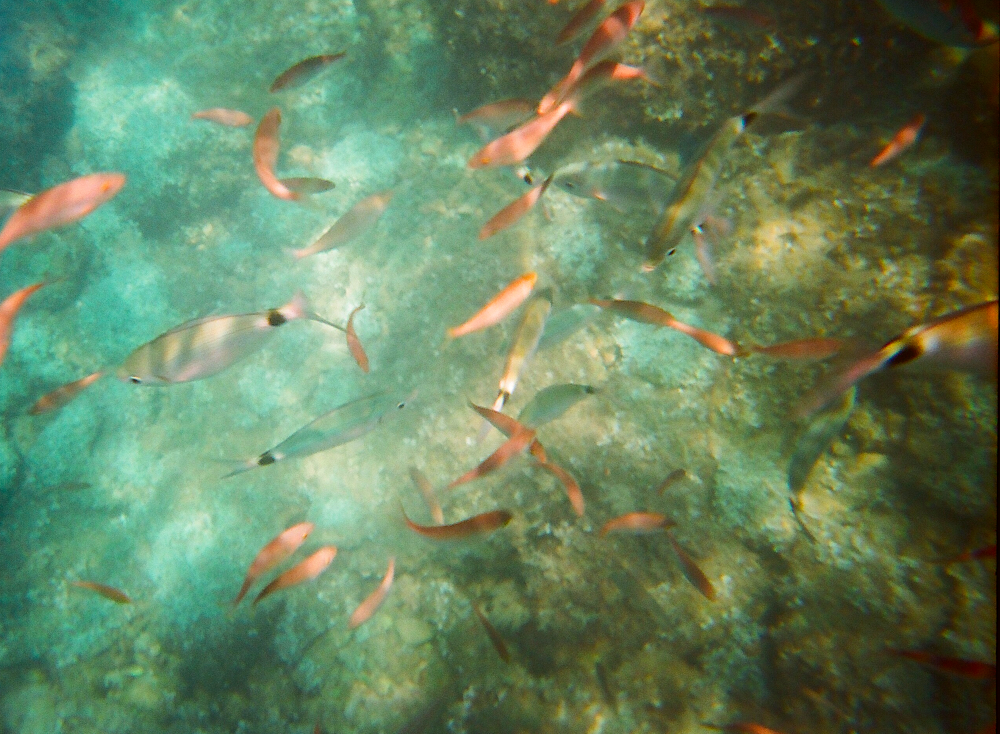 They are small fish, which feel save here, hidden away from the big predators. Moreover, they find food here in abundance since the water is warm and full of tiny crabs and other micro organisms. |
PlanktonThe sea foams and bubbles. Millions of air bubbles are around us.Do you feel the prickle on your skin. Parts of plants and tiny pieces of jellyfish that have not survived in the breakers whirl in the current. The wind is freshening now and the breakers are getting more powerful. We should swim out to the open sea a little. 
|
FreedivingNow, let's try to leave the surface and dive down into the blue.Just hold your breath, a few strong movements with your fins will push you deeper and deeper. This is called freediving. It is more fun if you know the technique of ear clearing. In a depth of approximately two meters the water pressure presses on our ears. Then hold your nose shut with your fingers and try to press the air out. Since it can't get out it will be pressed into the small canal that connects throat and ears. A little snap and the pain is gone. Now you feel as fit as a fiddle even in a depth of five or six meters. Should I not be with you next time, please, ask an experienced friend to show it to you again. By the way, it's an old and very important rule that one must not dive alone. |
StarfishLook, there is a big starfish below.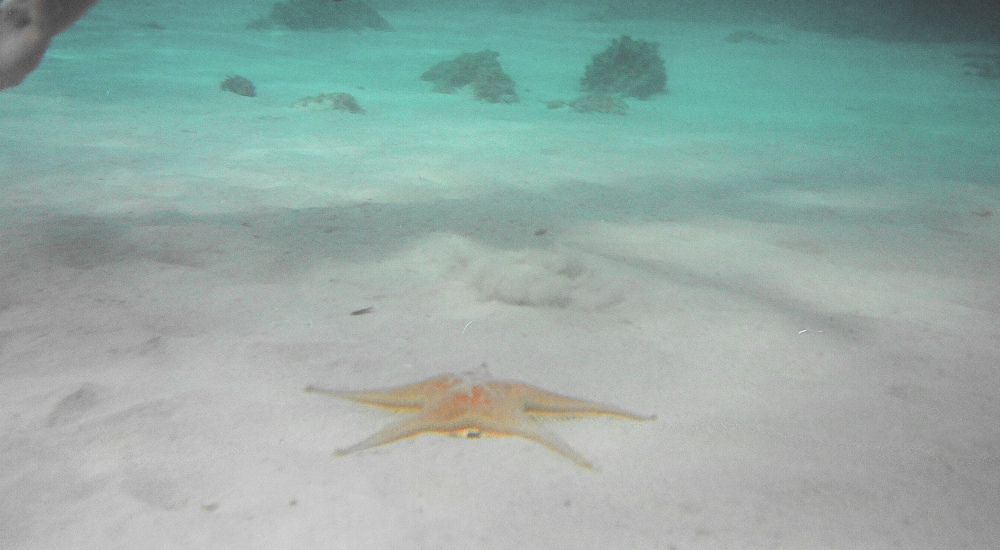 From above it is hard to be recognized because of its red colour. The seawater filters out the red components of the light. That's the reason why red is a camouflage for the creatures living in the sea. Let's have a closer look at the starfish. 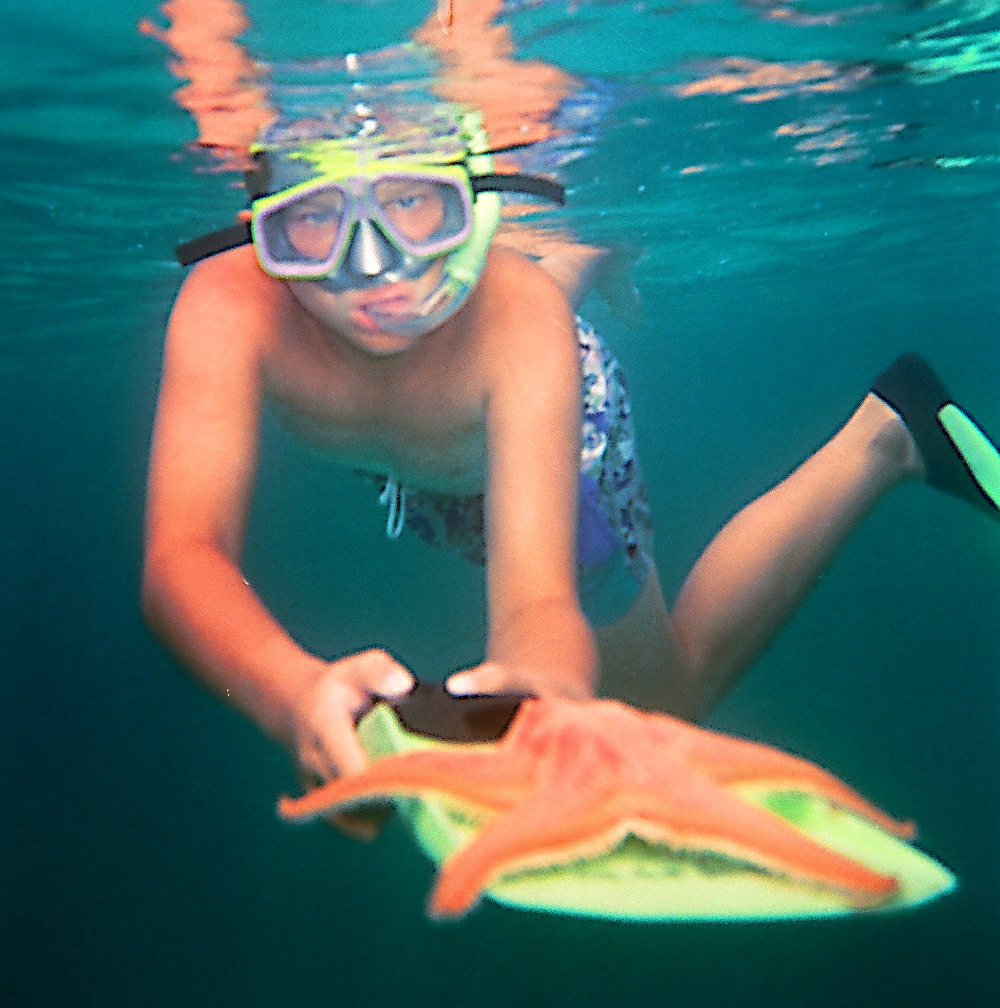 This specimen has hundreds of spines on each arm. Starfish of such respectable size are not easy to be found. More often than not they hide in the sand. |
10 metersFollow me below the magic border of 10 meters depth now.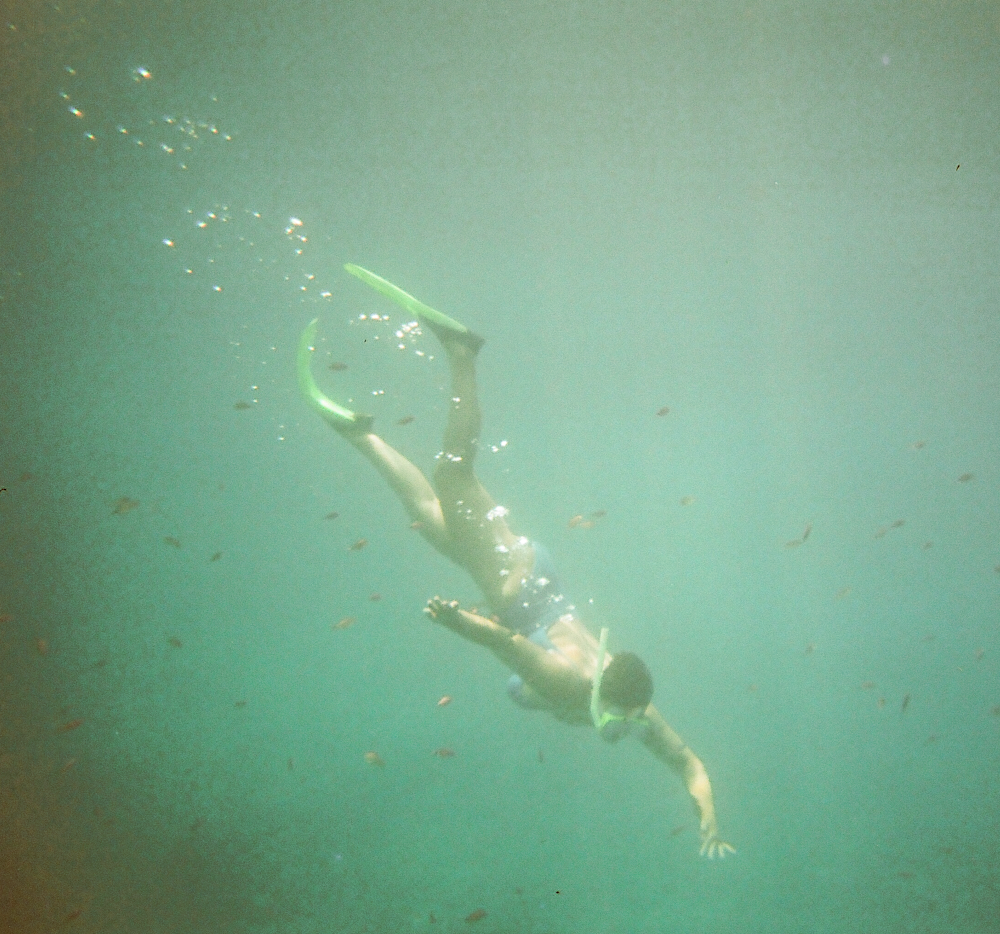 In this depth, we have no real contact to the surface anymore. The buoyancy is low and you seem to merge with the sea. |
Octopus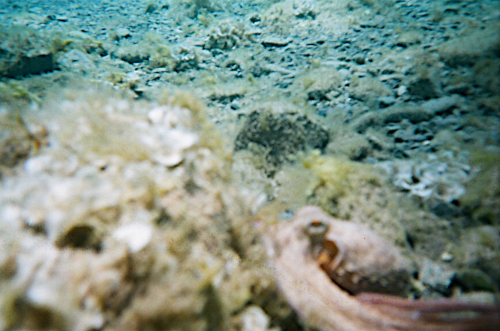 In the bottom right corner of the picture you can recognize an octopus. These shy creatures live between the rocks and don't like to be disturbed. |
Now, its looking somewhat blurred ... 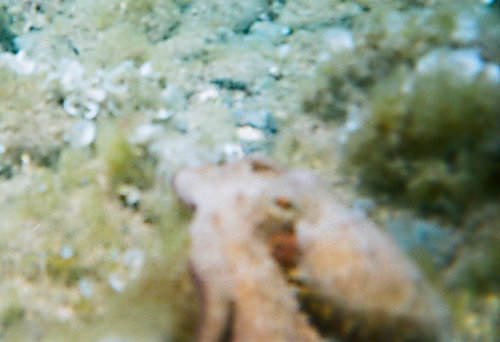
|
... and disgustedly swimming off into the blue leaving a huge black cloud behind.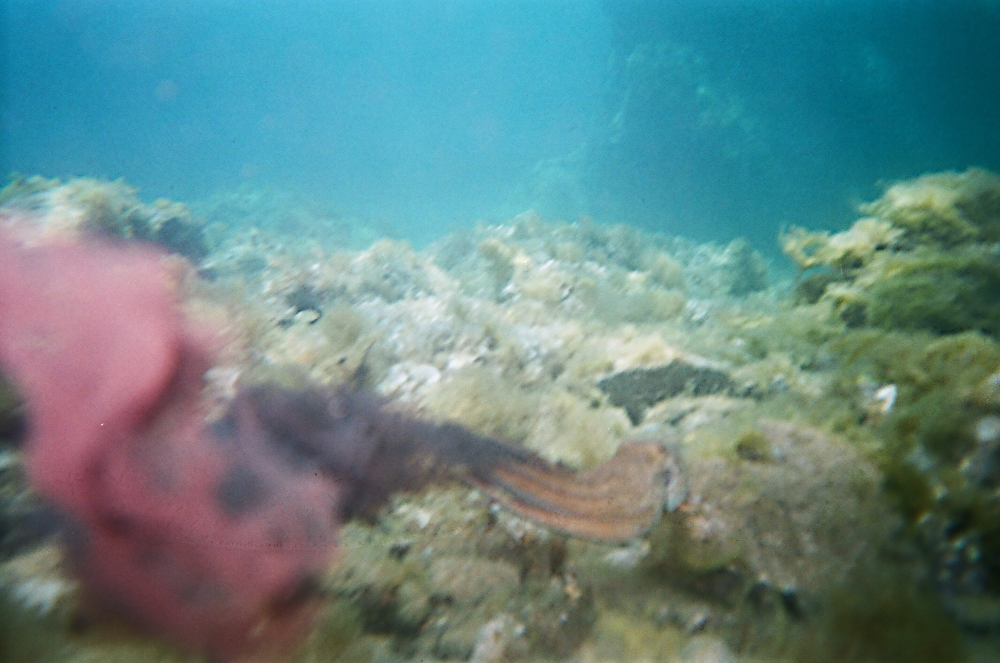
|
CrabThere are other creatures living between the rocks, too, crabs, for example.They are armed with two huge shears, one of which is always bigger than the other. Life is dangerous down there, smaller crabs are eaten up by the bigger ones. 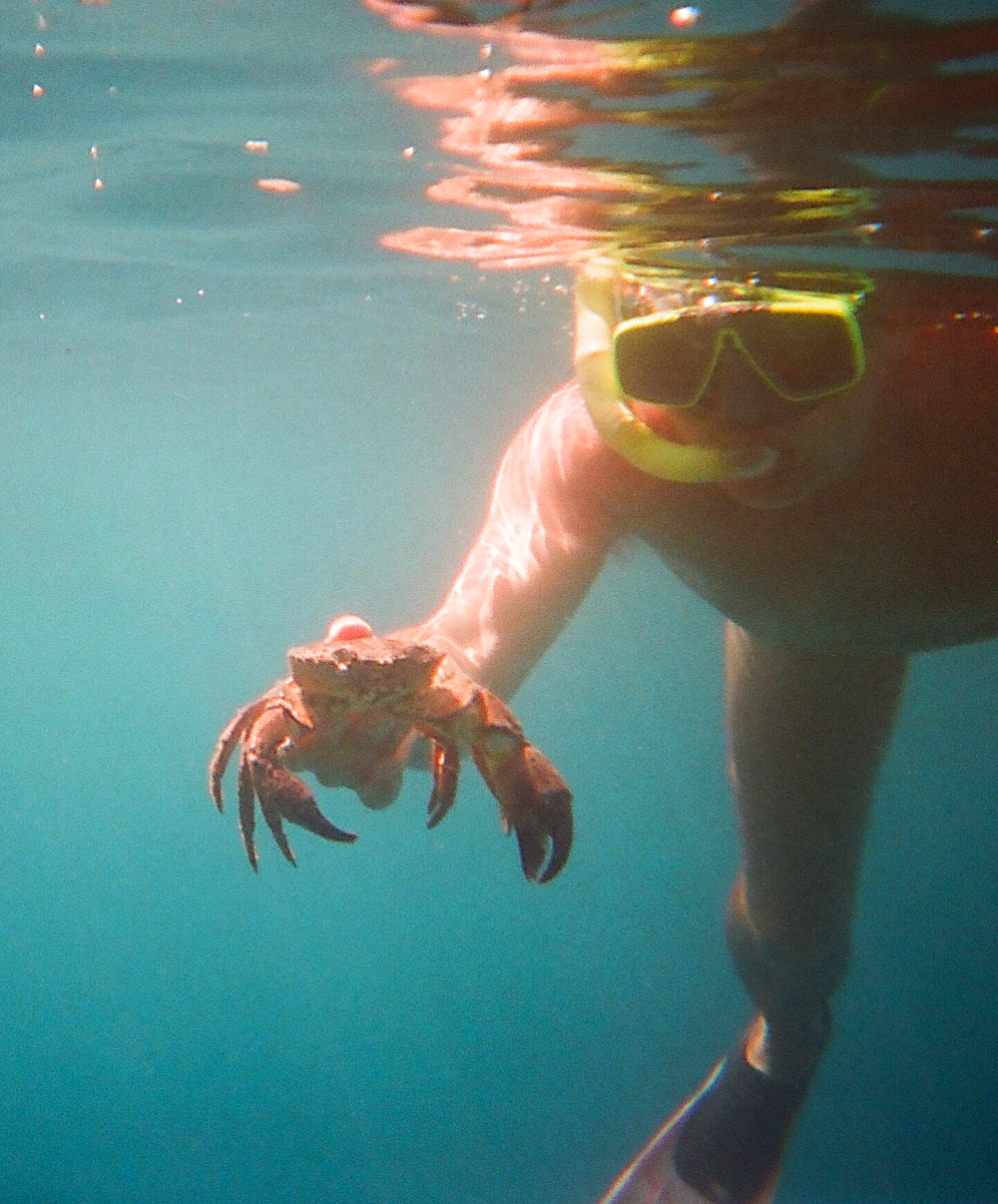 If you want to catch a crab, take hold of it from behind, then it won't pinch you. |
Fire jellyfishOn our return to the surface we meet another well-fortified inhabitant of the sea, a Fire jellyfish.
|
| I'm looking forward to our next dive together in the Mediterranean. |
| We took all the photos on this tour ourselves. |
| ☰ Menu Next page (Freediving in the Red Sea) |